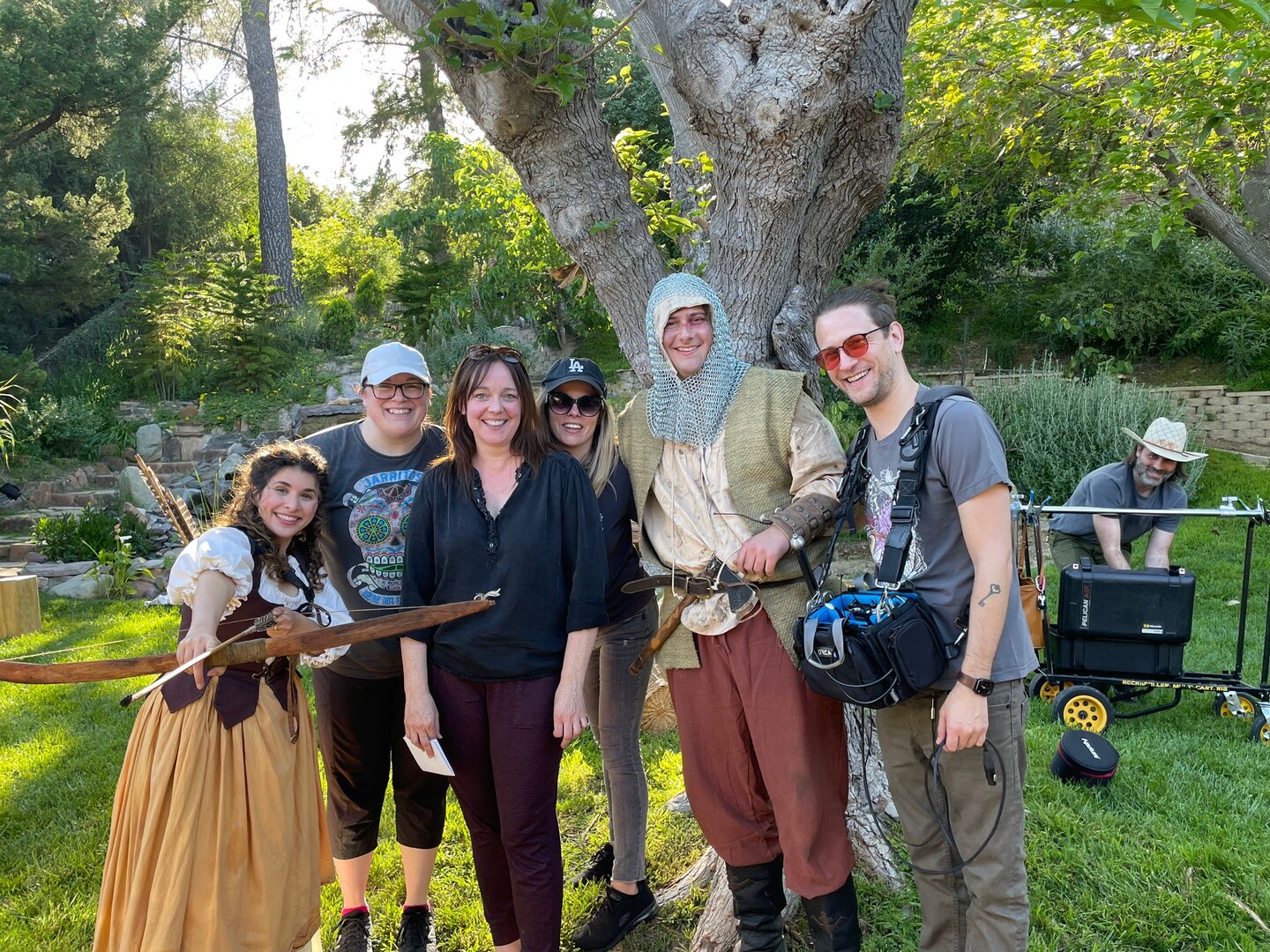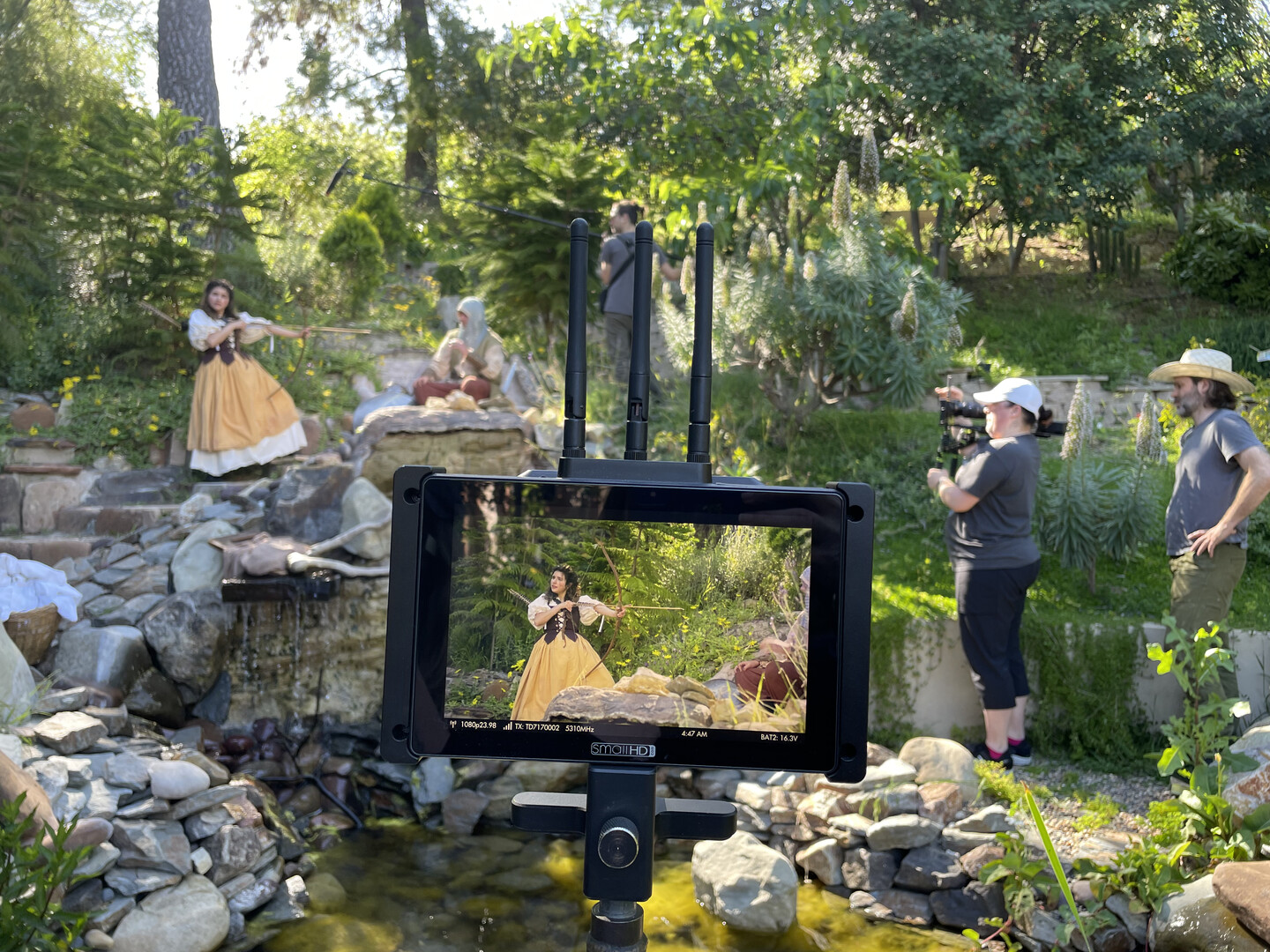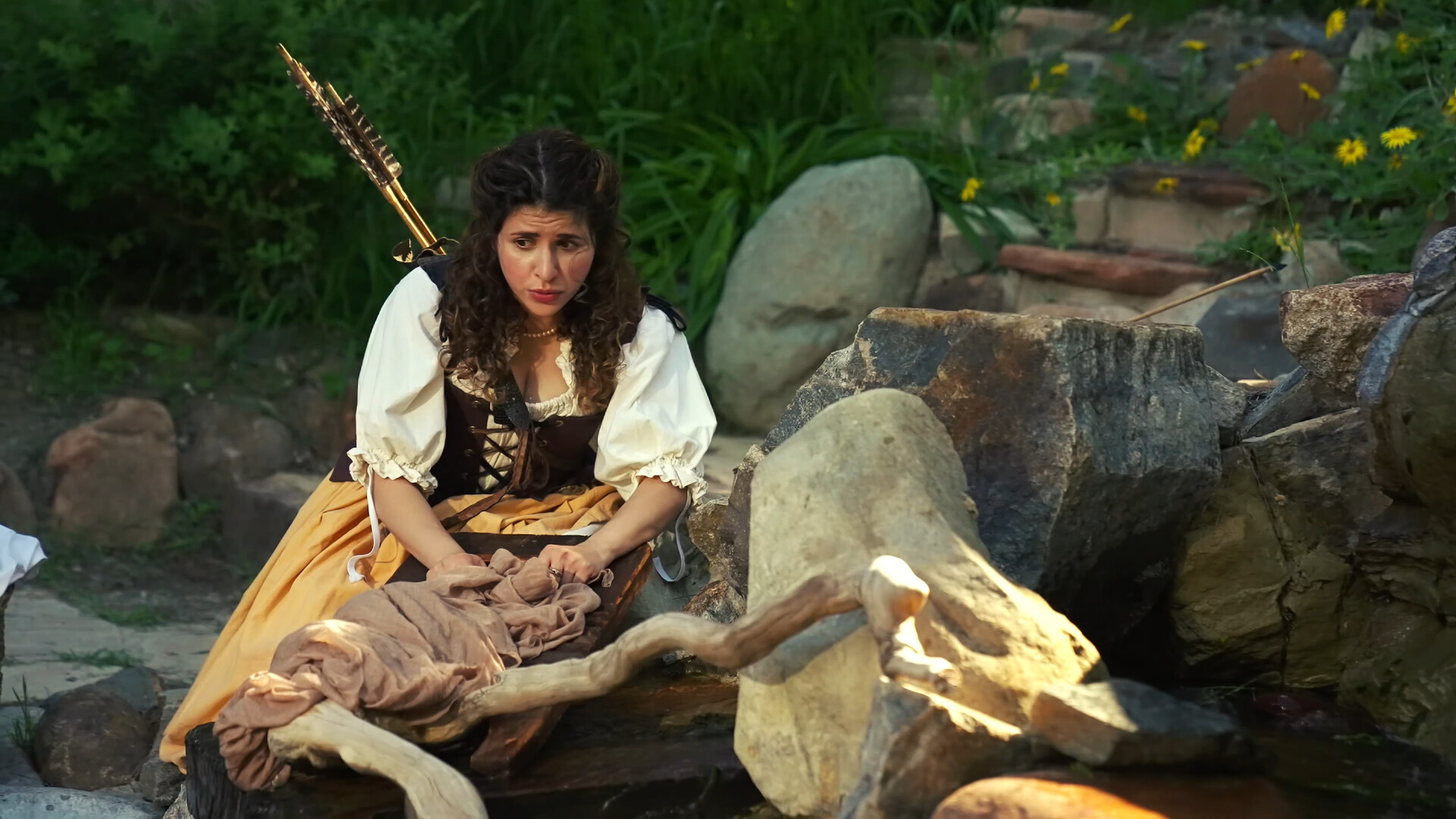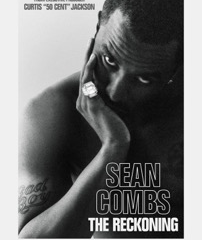Entertainment
Medieval Satire ‘Joan & Samuel’ Wins Best Sketch Comedy
In a delightful blend of medieval charm and modern wit, “Joan & Samuel: A Tale of Gaslighting and Independence” has captured the hearts of audiences and judges alike, securing the Best Sketch Comedy Film Award at the Houston Comedy Film Festival, HCFF. Directed by Karissa McKinny and written by Ophir Mashiah, this short film offers a hilarious take on women’s empowerment set against an unexpected historical backdrop.
A Medieval Twist on Modern Issues
The premise is as simple as it is clever: Samuel, a medieval soldier, returns from war expecting a warm embrace from his wife, Joan. Instead, he finds that Joan has embraced something quite different during his absence – women’s empowerment. This anachronistic setup provides fertile ground for comedy, exploring how modern concepts of independence and equality might clash with medieval sensibilities.

Behind the Scenes
In an interview with Roselyn Omaka, the director of HCFF, writer and producer Ophir Mashiah shared insights into the creation of “Joan & Samuel.” The project was born from a desire to explore how modern-day terms and concepts about feminism and women’s empowerment would be perceived in a vastly different historical context.
“I thought it would be really interesting to explore how the life we live in today in relationships, in what we call toxic, would be perceived in like medieval times,” Mashiah explained. This creative premise allowed the team to play with expectations and generate humor from the stark contrast between eras.
A Labor of Love
Mashiah described the project as a “creative outlet that would encompass all of my interests – my love for comedy, writing, acting, and even drawing.” The poster for the film was also created by Mashiah, showcasing the multi-faceted talents involved in bringing this vision to life.
The production was not without its challenges. The entire sketch was shot in just three hours, a testament to the team’s efficiency and professionalism. Mashiah recalled moments of barely contained laughter during filming, particularly praising co-star Charlie Hoffman for his comedic timing and delivery.
Impact and Reception
The success of “Joan & Samuel” at the Houston Comedy Film Festival is a significant milestone for the team. Mashiah expressed gratitude for the experience and the opportunity to bring joy to audiences. The award not only recognizes the quality of the production but also validates the risk taken in tackling modern issues through a historical lens.

Looking Ahead
With this success under their belt, Mashiah hinted at future projects in development, suggesting that we might see more innovative comedy from this talented team. The filmmaker also expressed interest in potentially expanding the concept, possibly into a series of sketches or a longer-format production.
As “Joan & Samuel” continues its festival run, it stands as a shining example of how clever writing, skilled direction, and talented performances can turn a simple premise into award-winning comedy. It reminds us that sometimes, to understand our present, we need to look to our past – and have a good laugh while we’re at it.
Entertainment
What We Can Learn Inside 50 Cent’s Explosive Diddy Documentary: 5 Reasons You Should Watch

50 Cent’s new Netflix docuseries about Sean “Diddy” Combs is more than a headline-grabbing exposé; it is a meticulous breakdown of how power, celebrity, and silence can collide in the entertainment industry.
Across its episodes, the series traces Diddy’s rise, the allegations that followed him for years, and the shocking footage and testimonies now forcing a wider cultural reckoning.

1. It Chronicles Diddy’s Rise and Fall – And How Power Warps Reality
The docuseries follows Combs from hitmaker and business icon to a figure facing serious criminal conviction and public disgrace, mapping out decades of influence, branding, and behind-the-scenes behavior. Watching that arc shows how money, fame, and industry relationships can shield someone from scrutiny and delay accountability, even as disturbing accusations accumulate.

2. Never-Before-Seen Footage Shows How Narratives Are Managed
Exclusive footage of Diddy in private settings and in the tense days around his legal troubles reveals how carefully celebrity narratives are shaped, even in crisis.
Viewers can learn to question polished statements and recognize that what looks spontaneous in public is often the result of strategy, damage control, and legal calculation.
3. Survivors’ Stories Highlight Patterns of Abuse and Silence
Interviews with alleged victims, former staff, and industry insiders describe patterns of control, fear, and emotional or physical harm that were long whispered about but rarely aired in this detail. Their stories underline how difficult it is to speak out against a powerful figure, teaching viewers why many survivors delay disclosure and why consistent patterns across multiple accounts matter.
4. 50 Cent’s Approach Shows Storytelling as a Tool for Accountability
As executive producer, 50 Cent uses his reputation and platform to push a project that leans into uncomfortable truths rather than protecting industry relationships. The series demonstrates how documentary storytelling can challenge established power structures, elevate marginalized voices, and pressure institutions to respond when traditional systems have failed.
5. The Cultural Backlash Reveals How Society Handles Celebrity Accountability
Reactions to the doc—ranging from people calling it necessary and brave to others dismissing it as a vendetta or smear campaign—expose how emotionally invested audiences can be in defending or condemning a famous figure. Watching that debate unfold helps viewers see how fandom, nostalgia, and bias influence who is believed, and why conversations about “cancel culture” often mask deeper questions about justice and who is considered too powerful to fall.
Entertainment
South Park’s Christmas Episode Delivers the Antichrist

A new Christmas-themed episode of South Park is scheduled to air with a central plot in which Satan is depicted as preparing for the birth of an Antichrist figure. The premise extends a season-long narrative arc that has involved Satan, Donald Trump, and apocalyptic rhetoric, positioning this holiday episode as a culmination of those storylines rather than a stand‑alone concept.
Episode premise and season context
According to published synopses and entertainment coverage, the episode frames the Antichrist as part of a fictional storyline that blends religious symbolism with commentary on politics, media, and cultural fear. This follows earlier Season 28 episodes that introduced ideas about Trump fathering an Antichrist child and tech billionaire Peter Thiel obsessing over prophecy and end‑times narratives. The Christmas setting is presented as a contrast to the darker themes, reflecting the series’ pattern of pairing holiday imagery with controversial subject matter.
Public and political reactions
Coverage notes that some figures connected to Donald Trump’s political orbit have criticized the season’s portrayal of Trump and his allies, describing the show as relying on shock tactics rather than substantive critique. Commentators highlight that these objections are directed more at the depiction of real political figures and the show’s tone than at the specific theology of the Antichrist storyline.
At the time of reporting, there have not been widely reported, detailed statements from major religious leaders focused solely on this Christmas episode, though religion-focused criticism of South Park in general has a long history.
Media and cultural commentary
Entertainment outlets such as The Hollywood Reporter, Entertainment Weekly, Forbes, Slate, and USA Today describe the Antichrist arc as part of South Park’s ongoing use of Trump-era and tech-world politics as material for satire.
Viewer guidance and content advisory
South Park is rated TV‑MA and is intended for adult audiences due to strong language, explicit themes, and frequent use of religious and political satire. Viewers who are sensitive to depictions of Satan, the Antichrist, or parodies involving real political figures may find this episode particularly objectionable, while others may view it as consistent with the show’s long‑running approach to controversial topics. As with previous episodes, individual responses are likely to vary widely, and the episode is best understood as part of an ongoing satirical series rather than a factual or theological statement.
Entertainment
Sydney Sweeney Finally Confronts the Plastic Surgery Rumors

Sydney Sweeney has decided she is finished watching strangers on the internet treat her face like a forensic project. After years of side‑by‑side screenshots, “then vs now” TikToks, and long comment threads wondering what work she has supposedly had done, the actor is now addressing the plastic surgery rumors directly—and using them to say something larger about how women are looked at in Hollywood and online.

Growing Up on Camera vs. “Before and After” Culture
Sweeney points out that people are often mistaking normal changes for procedures: she grew up on camera, her roles now come with big‑budget glam teams, and her body has shifted as she has trained, aged, and worked nonstop. Yet every new red‑carpet photo gets folded into a narrative that assumes surgeons, not time, are responsible. Rather than walking through a checklist of what is “real,” she emphasizes how bizarre it is that internet detectives comb through pores, noses, and jawlines as if they are owed an explanation for every contour of a woman’s face.
The Real Problem Isn’t Her Face
By speaking up, Sweeney is redirecting the conversation away from her features and toward the culture that obsesses over them.
She argues that the real issue isn’t whether an actress has had work done, but why audiences feel so entitled to dissect her body as public property in the first place.
For her, the constant speculation is less about curiosity and more about control—another way to tell women what they should look like and punish them when they do not fit. In calling out that dynamic, Sweeney isn’t just defending herself; she is forcing fans and followers to ask why tearing apart someone else’s appearance has become such a popular form of entertainment.

 Entertainment4 weeks ago
Entertainment4 weeks agoColombia’s ‘Doll’ Arrest: Police Say a 23-Year-Old Orchestrated Hits, Including Her Ex’s Murder

 Entertainment4 weeks ago
Entertainment4 weeks agoMiley Cyrus Is Engaged to Maxx Morando

 Film Industry3 weeks ago
Film Industry3 weeks agoDisney Brings Beloved Characters to ChatGPT After $1 Billion OpenAI Deal

 Business4 weeks ago
Business4 weeks agoLuana Lopes Lara: How a 29‑Year‑Old Became the Youngest Self‑Made Woman Billionaire

 Film Industry3 weeks ago
Film Industry3 weeks agoNetflix Got Outbid: Paramount Drops a $108 Billion Cash Bomb on Warner Bros.

 Entertainment4 weeks ago
Entertainment4 weeks agoAnne Hathaway Just Turned Her Instagram Bio Into a 2026 Release Calendar

 Entertainment3 weeks ago
Entertainment3 weeks agoWhat We Can Learn Inside 50 Cent’s Explosive Diddy Documentary: 5 Reasons You Should Watch

 Entertainment4 weeks ago
Entertainment4 weeks agoNetflix’s $82.7 Billion Warner Bros Deal Signals the Rise of a New Hollywood Power







































